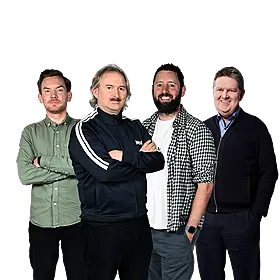The term “viral video” was unheard of ten years ago. Today discussions about neck nominations and ice-bucket challenges are common place in Irish society. The phenomenon of YouTube opens up our homes to the world and offers the opportunity to share moments of our life with people who have similar interests, values and ideals.
Clips such as “Charlie bit my Finger” and “conversations with my two-year-old” have turned day-to-day normalities into worldwide comedy. In the last week I clicked on a viral video which was on the Newstalk Facebook page and I had a sobering reaction. Watching a young child scold her mother who laughed as she sang I wondered “who is responsible for children’s safety in the anonymous world that is the internet?”
Again last week, a video showing a bearded father playing peek-a-boo with his two-year-old daughter went viral. After shaving off his facial hair the child was shocked and upset by the appearance of a different looking man before her. In this instance, it appears the child's trauma was then used for comedic value online.
This week a mother defended her decision to post a video of her son “experiencing heartbreak for the first time” on the basis that the now six-year-old thought it was funny and wanted it uploaded to YouTube.
As an aunt to an adorable and funny three-year-old I witness his comical behaviour on a weekly basis and when he imitates the adults in his life it makes me smile. As an early years professional, I also recognise the difference between a toddler being "funny" and displaying behaviours that could possibly breach a threshold of harm in terms of child protection.
It is important to stress at this point that one cannot determine abuse or neglect in a two-minute video. If we look at how quickly the “craze” of neck nomination escalated to individuals harming themselves and others to get “likes” I wonder how long it will be until a child is put at risk of physical harm for the attention of strangers.
With the ever-changing face of technology and social media a question that needs to be asked is who is responsible when we view images or recordings of children in distress?
As a nation Ireland has a torrid history with child protection, can we now redeem ourselves by putting in place measures to support individuals, families or organisations who want to report any apparent risk to children in viral videos? Does the childcare act 1991, Children’s First (2011) document and Preschool Regulations (2006) need to be updated to include protection for children on social media? At the very least media organisations should consider putting in place policies which protect children when sharing viral videos rather than further exploiting children’s private moments.
Sinéad Kelly is an early years professional graduate BA ECCE and author.









